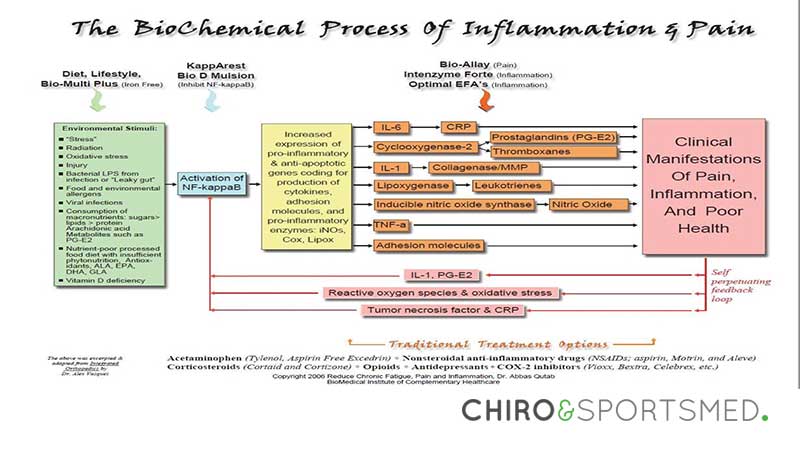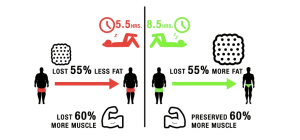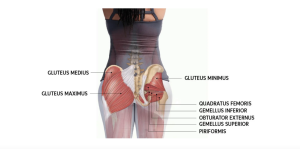Blog by Elizabeth Pattalis (Clinical Nutritionist & Personal Trainer)
Inflammation and injury or illness go hand in hand. Acute inflammation is easy to identify as it expresses as redness, swelling, and heat. Designed to heal the wound or fight the infection, this is a healthy immune response.
In contrast, chronic inflammation often goes unnoticed as it spreads throughout the body with no visible signs,  damaging organs and causing many diseases. Consequently it is usually when disease strikes that a person becomes aware something is wrong. Similar to acute inflammation, chronic inflammation is the result of an immune response. The immune system is persistently triggered with chronic inflammation. This can continue for months and years. The inflammation does not just fight infection, it begins to injure normal tissue including our joints.
damaging organs and causing many diseases. Consequently it is usually when disease strikes that a person becomes aware something is wrong. Similar to acute inflammation, chronic inflammation is the result of an immune response. The immune system is persistently triggered with chronic inflammation. This can continue for months and years. The inflammation does not just fight infection, it begins to injure normal tissue including our joints.
Constant chronic inflammation paired up with a pro-inflammatory diet can aggravate certain diseases. These include conditions like osteoarthritis and autoimmune diseases such as rheumatoid arthritis, psoriasis and endometriosis. As well as systemic lupus erythematosus and inflammatory bowel disease.
We eat for a healthy heart, healthy brain and a healthy digestive system. Our muscles and joints are no different. Likewise, we can eat for our musculoskeletal health. By addressing the key points listed below you can not only improve or prevent pain and degeneration, but you will also be reducing your risk of cardiovascular disease, diabetes and cancer.
Body Weight Management
It is important to lose weight if you are overweight. A result of too much body fat puts more pressure on the joints therefore contributing to more pain. Further to this, the chronic inflammation that comes with obesity and/or insulin resistance contributes to joint deterioration. As mentioned earlier, any chronic inflammation can cause the immune system to start interfering with healthy body tissue.
Limit Sugar
Increased insulin levels will typically dramatically worsen pain. Limit all sugars including fruit juices, soft drinks, sweets, pastries and refined products such as white bread.
Reduce Unhealthy Fats
Reduce your intake of omega 6 polyunsaturated fat and saturated fats. Consequently, eating too many foods that contain these fats can increase pain and inflammation. Omega 6 fats are found in red meat, vegetable oils, margarine and nuts. Saturated fats are found in dairy products, biscuits, cakes and other processed foods.
Eat Healthy Fats
Eat more omega 3 polyunsaturated fats which can lower inflammation. Omega 3s decrease inflammation, joint pain, swelling and stiffness and are natural pain reducers. Omega 3 fats are found in fatty fish such as sardines, herring, fresh tuna, salmon and trout. Other healthy fats include olive oil, olives and avocado.
Eat Foods Rich in Antioxidants
Eat a colourful diet. Fruits with the highest antioxidant content include blueberries, strawberries, cranberries, acai and goji berries. Vegetables with the highest antioxidant content include artichokes, spinach, kale, red cabbage and beetroot.
Additional Anti Inflammatory Foods
Garlic has been demonstrated to work similarly to NSAID pain medications like Ibuprofen. Garlic downregulates pathways that lead to inflammation. Similarly, another food which has an anti-inflammatory effect is onion. Onions contain a compound called quercetin which helps stabilise the cells that release histamine, creating an anti-inflammatory effect.
Try Avoiding Nightshade Vegetables
Nightshade vegetables like tomatoes, potatoes and eggplant may trigger arthritis and pain conditions in some people. Keeping a food diary and tracking symptoms may be helpful.
Avoid Aspartame
Artificial sweeteners found in some diet soft drinks and many sugar-free foods is part of a chemical group called excitotoxins. As a result, these activate neurons that can increase your sensitivity to pain.
Avoid Additives
Food additives such as monosodium glutamate (MSG) often cause trouble for pain in people. MSG is an excitatory neurotransmitter that may stimulate pain receptors.
Address Nutritional Deficiencies
A feature of osteoarthritis is cartilage loss in knees. This is associated with vitamin D deficiency. Get your vitamin D levels tested if you are struggling with joint pain due to osteoarthritis,
Sulfur plays a very important role in joint and cartilage formation. Inadequate levels impair joint repair and degenerate faster. Sulfur-rich foods include cauliflower, kale, cabbage, brussel sprouts, onions and garlic.
Identify Food Sensitivities
Migraines and joint pain can be a symptom of food intolerances. The problem with food intolerances is that they may occur immediately or hours later, and in some cases a few days later. Therefore it can be difficult to notice a connection. It may be worth considering either a stool test, a food intolerance test or a food elimination diet under the guidance of a nutritionist.
Taking Action
It can be overwhelming knowing where to start. Some medications interfere with nutrient absorption and they can interact with supplements. A number of people self prescribe supplements. As a result they are essentially throwing money away by taking nutrients in the incorrect dosages or forms for any benefits.
A clinical nutritionist can take a look at your diet and lifestyle to help people with arthritis and pain conditions. Furthermore, a nutritionist makes the most of people’s diets so they feel better, which in turn can help them move more. Minimising further deterioration and prevention of diseases is an area that nutritionist have expertise in.
Finally, the best eating advice is to follow a balanced diet that includes lots of fruits, vegetables, and whole grains, whilst getting in some daily movement.
For tailored nutrition plans please get in touch for a consultation. Elizabeth also works in clinics alongside experienced physiotherapists and chiropractors enabling better outcomes for her patients.
Elizabeth is available for nutritional consultations at Chiro & Sports Med every Thursday. If you would like to make a booking with Elizabeth please visit her website.





